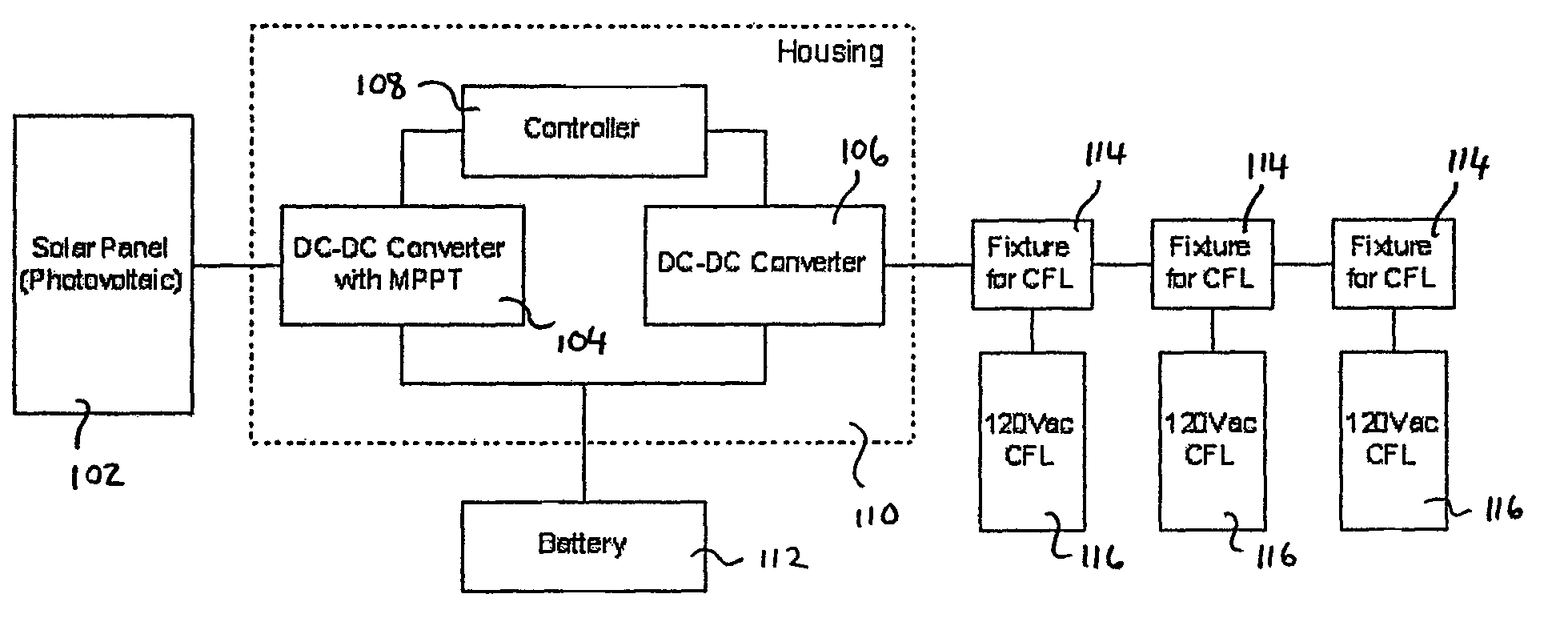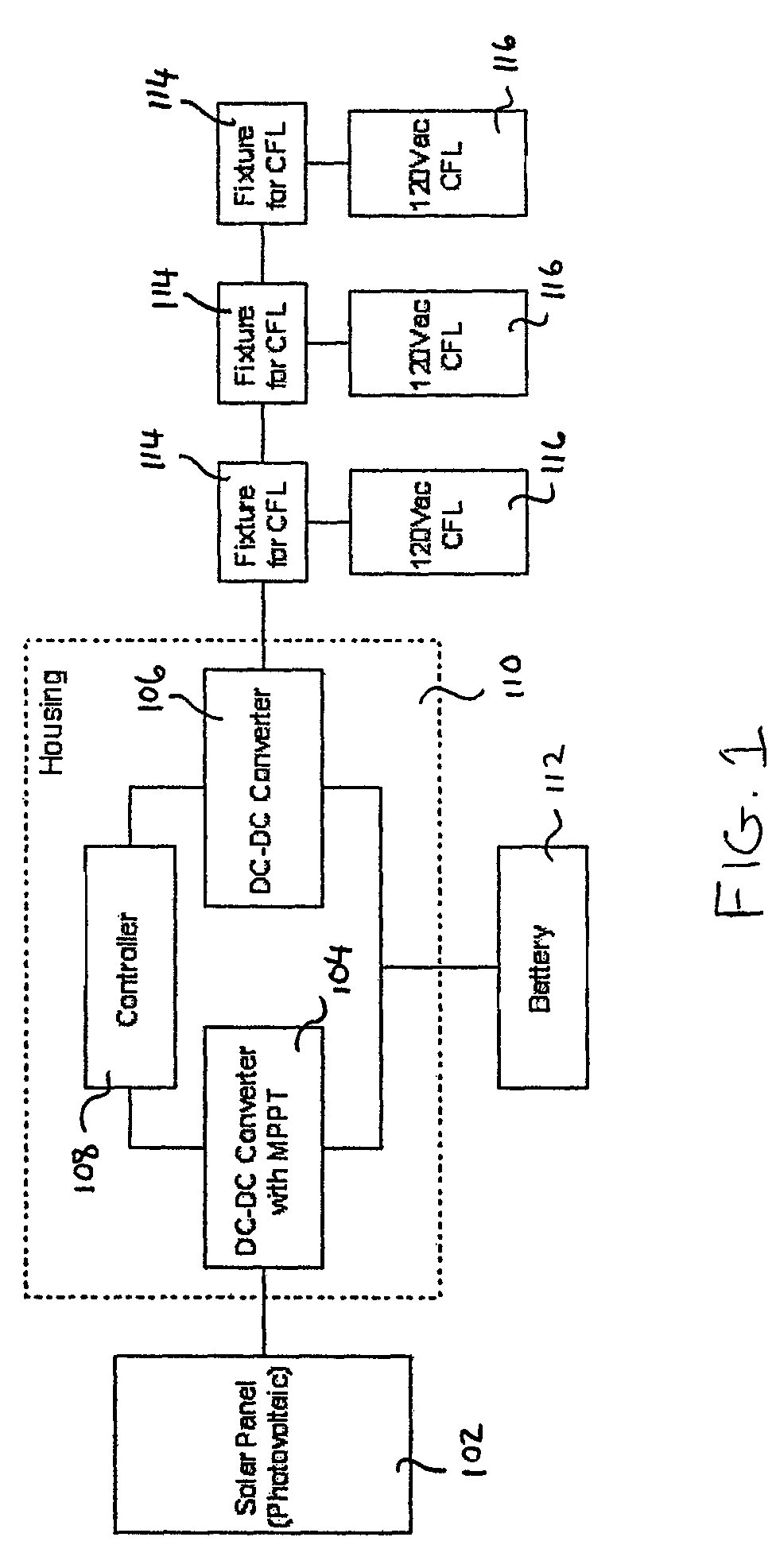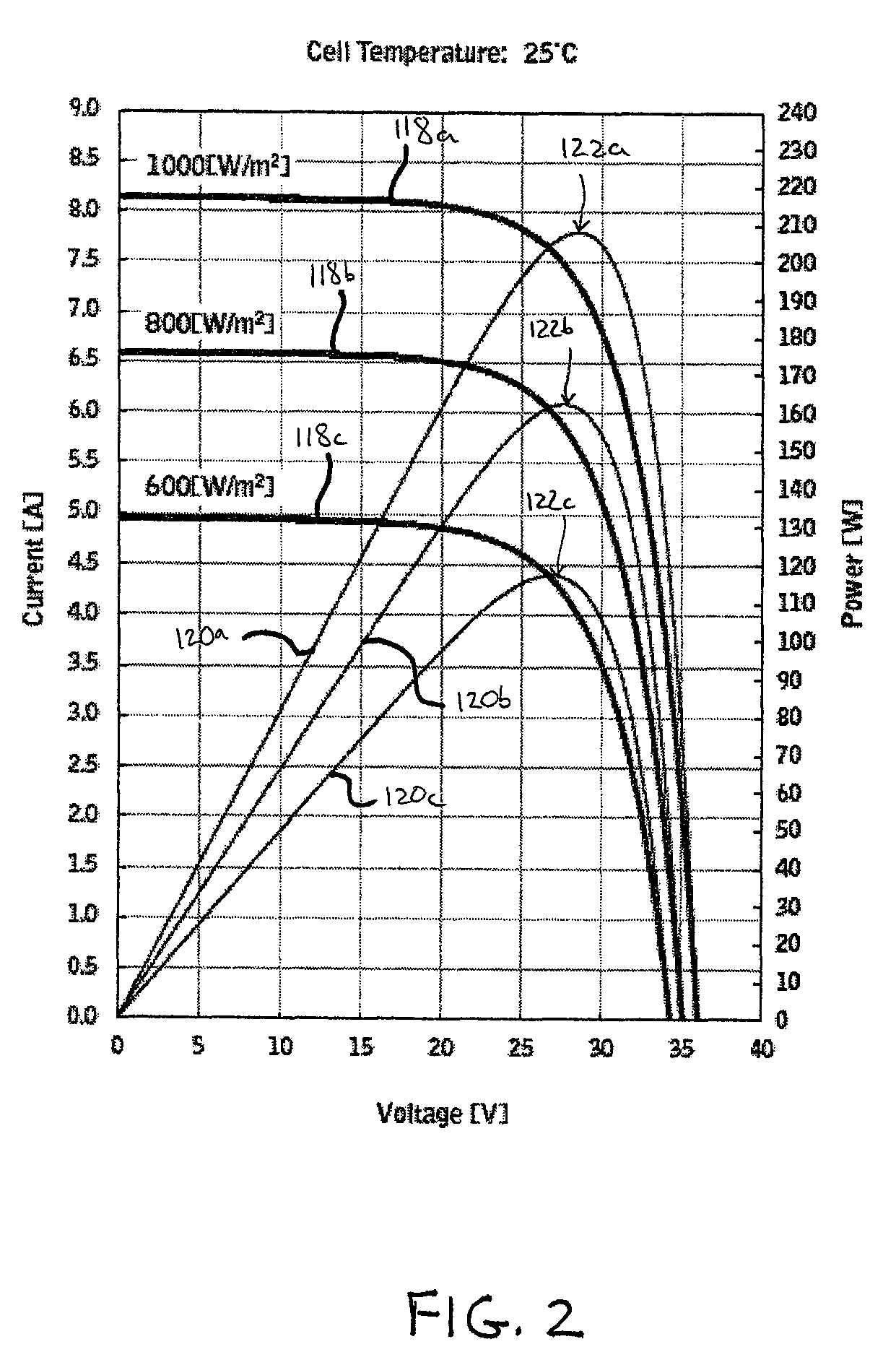Solar powered apparatus
a technology of solar energy and solar panels, applied in the direction of electric vehicles, solid-state devices, climate sustainability, etc., can solve the problems of not being as cost effective, not mass produced 12 vdc fluorescent lights, and each of these two types of systems suffers from significant drawbacks, and achieves efficient and inexpensive lighting
- Summary
- Abstract
- Description
- Claims
- Application Information
AI Technical Summary
Benefits of technology
Problems solved by technology
Method used
Image
Examples
Embodiment Construction
[0017]Many commercially available devices, such as, for example, compact fluorescent lights (CFLs), some televisions, radios etc., although typically constructed to receive alternating current (AC) power, rectify the incoming AC line to produce direct current (DC) power. Therefore, such devices may be powered directly by a DC signal, thus obviating the need for the inverter used in conventional systems. Such devices are referred to herein as DC-capable AC appliances. Accordingly, at least some aspects and embodiments are directed toward a solar photovoltaic system that provides direct connection access to DC-capable AC appliances, such as CFLs, without adding the unnecessary cost, complexity and efficiency loss from the inverter used in conventional systems. In addition, systems according to some embodiments may sustain or maximize the life of the battery by controlling the battery charge, as discussed below.
[0018]It is to be appreciated that this invention is not limited in its app...
PUM
 Login to View More
Login to View More Abstract
Description
Claims
Application Information
 Login to View More
Login to View More - R&D
- Intellectual Property
- Life Sciences
- Materials
- Tech Scout
- Unparalleled Data Quality
- Higher Quality Content
- 60% Fewer Hallucinations
Browse by: Latest US Patents, China's latest patents, Technical Efficacy Thesaurus, Application Domain, Technology Topic, Popular Technical Reports.
© 2025 PatSnap. All rights reserved.Legal|Privacy policy|Modern Slavery Act Transparency Statement|Sitemap|About US| Contact US: help@patsnap.com



